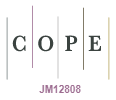Complexities of First Nations impact assessments in offshore environments
Miriam Bell A * and Tram Vu AA

Miriam holds a BSc in Marine Science and Environmental Science and a Master of Environment and Climate Policy. Her studies included a dissertation on blue carbon policy frameworks for climate mitigation and an Aboriginal On-Country learning unit, deepening her understanding of First Nations perspectives on land and sea management. With over 6 years of experience, including two in oil and gas and offshore wind, Miriam has supported First Nations cultural heritage assessments, offshore environmental impact assessments and approvals in Australia and internationally. Miriam is passionate about integrating First Nations perspectives into environmental approvals to protect cultural heritage and strengthen partnerships with Traditional Owners. |

Tram is an Xodus environmental consultant with a BSc and Honours degree in Environmental Science. As part of her degree, Tram completed a physics dissertation on sound production in fishes and now possesses a sound understanding of underwater noise propagation. Her studies had led her to become an offshore approvals specialist with significant experience in creating tailored impact, risk and cumulative impact methodologies, efficient compliance strategies and impact assessments for complex aspects such as light, noise, discharges, oil spills and First Nations values and sensitivities. |
Abstract
Writing First Nations impact assessments (IAs) presents several complexities due to the unique cultural, historical and spiritual connections of First Nations peoples to the land and sea. Potential impacts from offshore developments on First Nations communities can be far-reaching and interconnected, making it challenging to accurately identify, measure and assess all potential consequences. These complexities underscore the importance of conducting thorough and culturally sensitive IAs to ensure the rights and interests of First Nations peoples are adequately protected. A fundamental step is to identify and understand how First Nations people’s cultural sites and values are intrinsically connected to the physical aspects of the environment that may be affected. This understanding can only be achieved through meaningful engagement with First Nations communities to identify and comprehend cultural sites and values. Long-term partnerships between titleholders and First Nations communities are essential to maintain the validity of information and management of the cultural sites and values. We will explore the complexities of defining First Nations people’s cultural sites and values and how offshore Australian titleholders have developed effective IAs and management strategies to protect the rights and interests of First Nations people.
Keywords: Aboriginal cultural heritage, connection to Country, cultural heritage, environmental impact assessment, First Nations, First Nations impact assessment, heritage values, Indigenous impact assessment, oil and gas, stakeholder engagement.
 Miriam holds a BSc in Marine Science and Environmental Science and a Master of Environment and Climate Policy. Her studies included a dissertation on blue carbon policy frameworks for climate mitigation and an Aboriginal On-Country learning unit, deepening her understanding of First Nations perspectives on land and sea management. With over 6 years of experience, including two in oil and gas and offshore wind, Miriam has supported First Nations cultural heritage assessments, offshore environmental impact assessments and approvals in Australia and internationally. Miriam is passionate about integrating First Nations perspectives into environmental approvals to protect cultural heritage and strengthen partnerships with Traditional Owners. |
 Tram is an Xodus environmental consultant with a BSc and Honours degree in Environmental Science. As part of her degree, Tram completed a physics dissertation on sound production in fishes and now possesses a sound understanding of underwater noise propagation. Her studies had led her to become an offshore approvals specialist with significant experience in creating tailored impact, risk and cumulative impact methodologies, efficient compliance strategies and impact assessments for complex aspects such as light, noise, discharges, oil spills and First Nations values and sensitivities. |
References
AIATSIS (1996) The AIATSIS Map of Indigenous Australia. Created by David R Horton. (Australian Institute of Aboriginal and Torres Strait Islander Studies) Available at https://aiatsis.gov.au/explore/map-indigenous-australia
AIATSIS (2020) AIATSIS Code of Ethics for Aboriginal and Torres Strait Islander Research. Available at https://aiatsis.gov.au/sites/default/files/2022-02/aiatsis-code-ethics-jan22.pdf
Chevron (2024) ‘Wheatstone deep-1 exploration drilling environment plan’. pp. 110–130. (Chevron Australia Pty Ltd) Available at https://docs.nopsema.gov.au/A1152228
CoA (2013) Matters of National Environmental Significance Significant impact guidelines 1.1 Environment Protection and Biodiversity Conservation Act 1999. (Commonwealth of Australia) Available at https://www.dcceew.gov.au/sites/default/files/documents/nes-guidelines_1.pdf
Cooper Energy (2024) ‘East Coast Supply Project Offshore Project Proposal. Otway Basin’. pp. 742–771. Available at https://www.nopsema.gov.au/sites/default/files/documents/OPP%20-%20East%20Coast%20Supply%20Project%20-%20Rev%202%20-%20December%202024.pdf
DCCEEW (2024) First Nations heritage. (Department of Climate Change, Energy, the Environment and Water) Available at https://www.dcceew.gov.au/parks-heritage/heritage/about/indigenous-heritage
Janke T, Cumpston Z, Hill R, Woodward E, Harkness P, von Gavel S, Morrison J (2021) Indigenous: Country and connections. In ‘Australia State of the environment 2021.’ (Australian Government Department of Agriculture, Water and the Environment: Canberra) 10.26194/3JDV-NH67
Jolly D, Thompson-Fawcett M (2021) Enhancing Indigenous impact assessment: lessons from Indigenous planning theory. Environmental Impact Assessment Review 87, 106541.
| Crossref | Google Scholar |
OECD (2020) ‘Linking Indigenous Communities with Regional Development in Australia, OECD Rural Studies’. (Organisation for Economic Co-operation and Development Publishing: Paris) 10.1787/ab4d8d52-en
O’Faircheallaigh C, MacDonald A (2022) Indigenous impact assessment: a quiet revolution in EIA? In ‘Routledge Handbook of Environmental Impact Assessment’. (Ed. K Hanna) pp. 221–238. (Routledge) 10.4324/9780429282492
Samuel G (2020) ‘Independent Review of the EPBC Act-Interim Report’. (Department of Agriculture, Water and the Environment. Commonwealth of Australia: Canberra) Available at https://www.dcceew.gov.au/sites/default/files/documents/epbc-act-review-interim-report-june-2020.pdf
Santos (2024) ‘Halyard-2 Drilling & Completions Environment Plan’. pp. 128–155. (Santos Ltd) Available at https://docs.nopsema.gov.au/A1098589
VAHC (2020) ‘Taking Care of Culture. State of Victoria’s Aboriginal Cultural Heritage Report. Chapter 15: Aboriginal Cultural Heritage Register – intangible heritage’. pp. 44–45. (Victorian Aboriginal Heritage Council) Available at https://www.aboriginalheritagecouncil.vic.gov.au/sites/default/files/2021-01/Taking%20Care%20of%20Culture%20Discussion%20Paper_04012021_2.pdf
Woodside Energy (2024a) ‘Minerva Plug and Abandonment Environment Plan’. Appendix F. pp. 4–26. (Woodside Energy Limited) Available at https://docs.nopsema.gov.au/A1162831
Woodside Energy (2024b) ‘Ngujima-Yin Floating Production Storage and Offloading Facility Operations Environment Plan’. Appendix F. pp. 8–99. (Woodside Energy Limited) Available at https://docs.nopsema.gov.au/A1162855


